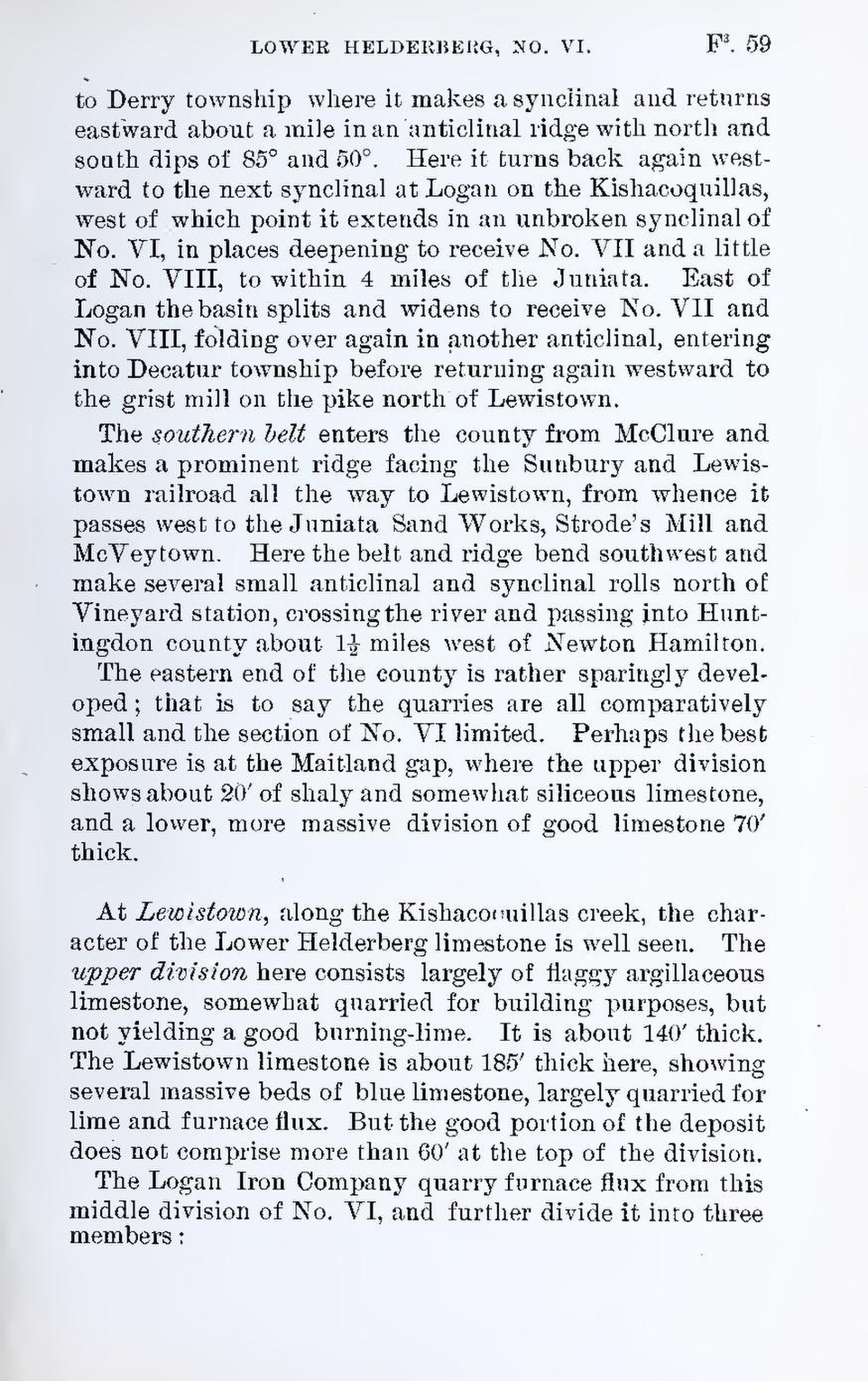to Derry township where it makes a synclinal and returns eastward about a mile in an anticlinal ridge with north and south dips of 85° and 50°. Here it turns back again westward to the next synclinal at Logan on the Kishacoquillas, west of which point it extends in an unbroken synclinal of No. VI, in places deepening to receive No. VII and a little of No. VIII, to within 4 miles of the Juniata. East of Logan the basin splits and widens to receive No. VII and No. VII, folding over again in another anticlinal, entering into Decatur township before returning again westward to the grist mill on the pike north of Lewistown.
The southern belt enters the county from McClure and makes a prominent ridge facing the Sunbury and Lewistown railroad all the way to Lewistown, from whence it passes west to the Juniata Sand Works, Strode’s Mill and McVeytown. Here the belt and ridge bend southwest and make several small anticlinal and synclinal rolls north of Vineyard station, crossing the river and passing into Huntingdon county about 1½ miles west of Newton Hamilton.
The eastern end of the county is rather sparingly developed; that is to say the quarries are all comparatively small and the section of No. VI limited. Perhaps the best exposure is at the Maitland gap, where the upper division shows about 20′ of shaly and somewhat siliceous limestone, and a lower, more massive division of good limestone 70′ thick.
At Lewistown, along the Kishacoquillas creek, the character of the Lower Helderberg limestone is well seen. The upper division here consists largely of flaggy argillaceous limestone, somewhat quarried for building purposes, but not yielding a good burning-lime. It is about 140′ thick. The Lewistown limestone is about 185′ thick here, showing several massive beds of blue limestone, largely quarried for lime and furnace flux. But the good portion of the deposit does not comprise more than 60′ at the top of the division.
The Logan Iron Company quarry furnace flux from this middle division of No. VI, and further divide it into three members:
